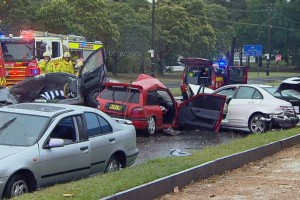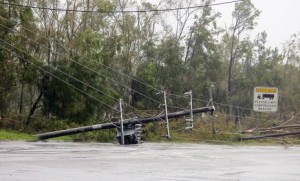 The tragic news story of a man that was killed last night attending to the scene of a motor vehicle accident, has highlighted the real importance of safety in First Aid. The Good Samaritan had stopped to help and render assistance to drivers at the scene of a multi-vehicle crash in western Sydney. Unfortunately whilst providing First Aid, the man was struck by a passing car and died at the scene.
The tragic news story of a man that was killed last night attending to the scene of a motor vehicle accident, has highlighted the real importance of safety in First Aid. The Good Samaritan had stopped to help and render assistance to drivers at the scene of a multi-vehicle crash in western Sydney. Unfortunately whilst providing First Aid, the man was struck by a passing car and died at the scene.
Safety Is Number One In First Aid
It is a primal instinct that many people feel the urge to rush to the aid of someone in need. This is especially the case if that injured person is a loved one – a partner, a child, a family member or a friend. However regardless of the situation or what persons may be involved, it is essential that the safety of everyone at the scene of an accident is ensured first.
Safety For Yourself
As selfish as it might seem, your number one priority at the scene of an emergency incident is to ensure the safety of yourself. It is common sense that if you become injured, it can be hard to provide First Aid to others. Additionally, if you become injured, you may become another casualty that someone has to treat. It is vitally important that you ensure the safety for the rescuer (you), bystanders and casualties, in that order.
 Assess The Scene
Assess The Scene
Whilst we can have the urge to rush in and help out in the event an accident, it is important that you take a few moments to compose yourself and ensure safety. On approach to the scene, it is recommended you take time to look around, assess the scene and check that the scene is safe to enter. This assessment should include checking for any dangers or hazards that may pose a risk to one’s safety. It is important to recognise that every incident and situation can present a different array of hazards. These hazards could include fire, fumes, smoke, sharp metal objects, unstable structures and chemicals, just to name a few. You may also need to be aware of hidden dangers such as electricity, overhead hazards and poison gases.
Make The Scene Safe
After you assess the scene, it is important to make sure any hazards and dangers you identify are addressed. Depending on what hazards are present, you may need to take action and take steps to ensure the scene is safe. For example, you may clear broken glass at the scene of a motor vehicle accident. At the scene of an electrocution accident, you may turn the electricity off at the main power supply. Once you have made the scene safe to enter, it is important to continue to think about your own and other’s safety. Safety is an ongoing concern and it should never leave your thoughts.
Leave Dangerous Situations To The Experts
Whilst some incidents and hazards can be made safe, sometimes a scene can just be too dangerous. For example, an incident involving active high voltage power lines can pose extreme risks. If the incident is too dangerous, sometimes the best option is to stay clear, call emergency services and leave the incident to emergency services personnel. In this situation, you may also need to keep other bystanders clear.
Get Trained Up
To be ready for any type of emergency, it pays to be prepared. First Aid training can provide you with the vital skills and knowledge that could help you save not only someone else’s life, but your life as well. Coastal First Aid runs regular First Aid courses in Port Macquarie, Taree & Nelson Bay and for groups across the Mid North Coast. You can check out our upcoming course page for further details.
